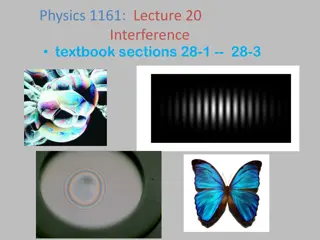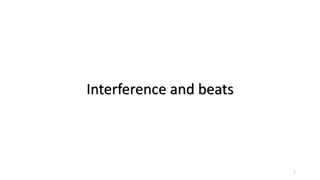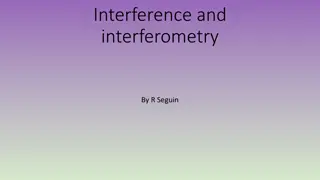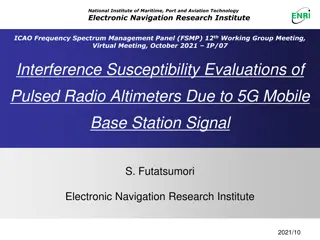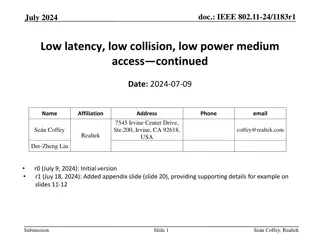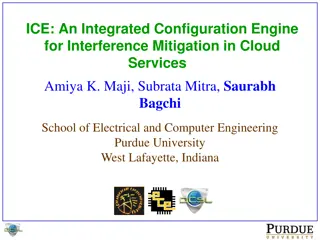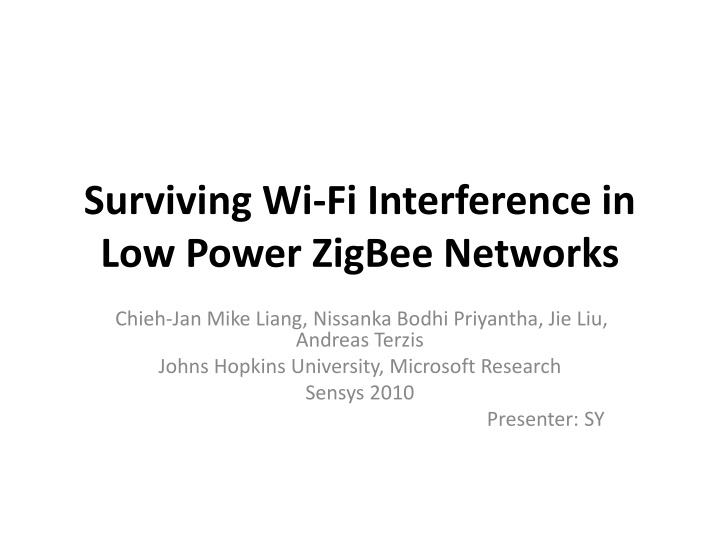
Solving Wi-Fi Interference in ZigBee Networks
Delve into strategies for managing Wi-Fi interference in low-power ZigBee networks, exploring packet protection, channel utilization, real measurement techniques, and more to ensure robust communication.
Download Presentation

Please find below an Image/Link to download the presentation.
The content on the website is provided AS IS for your information and personal use only. It may not be sold, licensed, or shared on other websites without obtaining consent from the author. If you encounter any issues during the download, it is possible that the publisher has removed the file from their server.
You are allowed to download the files provided on this website for personal or commercial use, subject to the condition that they are used lawfully. All files are the property of their respective owners.
The content on the website is provided AS IS for your information and personal use only. It may not be sold, licensed, or shared on other websites without obtaining consent from the author.
E N D
Presentation Transcript
Surviving Wi-Fi Interference in Low Power ZigBee Networks Chieh-Jan Mike Liang, Nissanka Bodhi Priyantha, Jie Liu, Andreas Terzis Johns Hopkins University, Microsoft Research Sensys 2010 Presenter: SY
Outline Introduction WiFi and Zigbee Interactions Protecting 15.4 Packets BuzzBuzz Conclusion
About This Paper WiFi interference on 802.15.4 network Examines the interference To bit-level granularity Providing solutions for these interference Show the solutions work
802.15.4 Transmit 1 byte: 32 us Max packet size: 133 bytes Using CSMA/CA Calculate hamming distance to detect valid preamble
802.11 CSMA/CA
Outline Introduction WiFi and Zigbee Interactions Protecting 15.4 Packets BuzzBuzz Conclusion
Detect WiFi Interference Use a sniffer RFMD ML2724 narrow band radio Fast RSSI output Channel assignments 802.11 -> channel 11 802.15.4 -> channel 22 ML2724 -> 2465.792 MHz (equivalent of 15.4 channel 23) Use Data Acquisition (DAQ) card Record event timing
Experiment In Parking garage 802.11 802.11 b/g access point and a laptop A stream of 1,500-byte TCP segments 802.15.4 One sender, five receivers Sends one max-size packet every 75 ms Broadcast 2000 packets Predefined byte pattern Record every packets
Overlay of 802.11 and 802.15.4 Why 802.11 back-off, interference still high
Zone In Bit errors concentrated in the front part
Outline Introduction WiFi and Zigbee Interactions Protecting 15.4 Packets BuzzBuzz Conclusion
Symmetric Region Packet corrupted at front Three techniques examined Decrease correlation threshold Reduce the constrain Increase preamble length Higher change to have valid preamble Multi-header
Multi-Headers Send two packet back-to-back wouldn t work Two length field are different Custom CRC Performance:
Asymmetric Region Forward error correction (FEC) Apply error-correction code (ECC) Two ECCs Hamming code Adding extra parity bits Can detect up to two bit errors and correct one bit error Reed-Solomon Code Block-based error-correction code Divided message into x blocks of data and y blocks of parity
Hamming Code Hamming (12,8) 4 parity bit in 8-bit data Can detect and correct one bit error in 12-bit word They use 72-byte data, result in 108-byte message 754 bytes ROM, 82 bytes RAM Encode: 1.4ms, decode: 1.8ms Hamming (12,8) with interleaving Interleave bits in message 1.4 KB ROM, 100 bytes RAM Encode: 6.7ms, decode: 9.2ms
Reed-Solomon (RS) Code Divided message into x blocks of data and y blocks of parity Their implementation 65 bytes data, 30 bytes parity 2.9 KB ROM, 1.4 KB RAM Execution time: Result
Outline Introduction WiFi and Zigbee Interactions Protecting 15.4 Packets BuzzBuzz Conclusion
Techniques For Reliable Transmission Three techniques ARQ -- retransmission Multi-header TinyRS (Reed-Solomon coding) Trade-off Resource and computation time TinyRS > Multi-header > ARQ Performance ARQ > Multi-header > TinyRS
BuzzBuzz Protocol Attempts to deliver using ARQ If cannot delivered after 3 attempts Adds TinyRS and Multi-header Remember last setting for 60 seconds After receive three consecutive packets that pass MH CRC Go back to na ve approach
Conclusion Examine interference between 802.11 and 802.15.4 Found problems that previous research overlooked Design and evaluated solutions Multi-header Reed-Solomon code Implement TinyRS Proposed BuzzBuzz protocol




